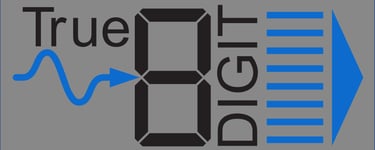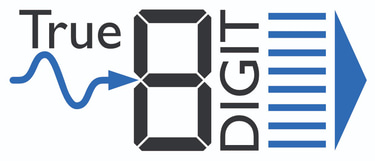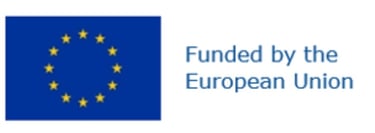WP 1
NOVEL ARCHITECTURES AND SOLUTIONS FOR THE ADCs


WP1 aims to revolutionize analogue-to-digital conversion across DC–100 kHz by tackling the performance limits of current digitisers, DMMs, and commercial ADCs. The work begins with a deep review of state-of-the-art IADC, ΣΔ, and SAR technologies to identify barriers in dynamic range, noise, and stability. Using advanced component-level modelling, the team will define key performance requirements and develop a digital twin framework to simulate and optimize metrology-grade digitiser designs.
Building on this foundation, WP1 will prototype a novel parallel SAR ADC to validate improvements in SNR, linearity, and stability. Complementing this, innovative characterization techniques using ultra-pure sine and multi-tone signals will map dynamic non-linearities, enabling advanced signal processing strategies—such as equalization—to mitigate AC regime distortions and elevate digitiser performance beyond current standards.


WP 2
NOVEL COMPOSITE OPERATIONAL AMPLIFIERS AND KEY COMPONENT CHARACTERISATION
WP2 targets the fundamental performance bottlenecks of commercial operational amplifiers — key components in the integrator and front-end stages of high-accuracy ADCs. The team will design and test Composite Operational Amplifiers (COPA) prototypes optimized for zero drift, high gain and sub-ppm accuracy across DC–100 kHz. Dedicated simulation models and evaluation boards will validate metrics such as offset and noise, ensuring compliance with demanding metrological standards.
In parallel, WP2 pioneers metrology-grade characterization methods for critical passive and switching components, assessing stability, linearity, and switching behavior. The final phase integrates and optimizes the COPA-based front-end, with prototype fabrication and multi-tone testing up to 1 MHz. These results will provide a solid foundation for future IEEE and IEC standardization of next-generation high-precision amplifiers.


WP 3
ULTRA-QUIET AND LOW NOISE POWER SUPPLY
WP3 tackles one of the biggest challenges in precision measurement — power line interference — by developing an ultra-quiet, low-noise power supply optimized for advanced ADC architectures. The team will define stringent requirements for noise, voltage, and current across analog and digital rails, ensuring continuous operation, circuit protection, and real-time condition monitoring within a robust system design.
Subsequent tasks focus on engineering low-noise AC/DC modules and isolated analog/digital power stages with meticulous PCB and mechanical layouts to suppress interference. A prototype demonstrator will undergo full metrological characterization, measuring noise floor, leakage, thermal stability, and load effects. The final open-source design aims to set a new benchmark for quiet, stable power supplies in precision instrumentation worldwide.


WP 4
RELIABLE TIMING AND SYNCHRONISATION METHODS FOR NOVEL ADC ARCHITECTURES
WP4 is dedicated to achieving ultra-precise timing and synchronization for advanced ADC architectures, targeting time jitter below 50 ps. The team will develop a galvanically isolated clock and triggering system supporting 10 MHz and 100 MHz reference frequencies and multiple trigger outputs — critical for accurate characterization of digitiser transfer functions using ultra-pure sine sources.
Building on this, WP4 will establish metrology-grade methods to evaluate clock stability, delay, and jitter performance on both isolated and non-isolated hardware. The final outcome is a conceptual reference platform—integrating hardware and software—for managing local and remote synchronization of digitisers, ADC prototypes, and reference sources, ensuring compatibility with existing high-precision metrology systems.


WP 5
CREATING IMPACT


The outcome of this project targets three pillars:
i) to provide necessary proof-of-concept on key solutions to underpin a follow-up project in the 2025 IEM call;
ii) to provide solutions directly applicable to precision instrumentation;
iii) to build research capacity in the developing NMIs/DIs that participate, thus enabling them to join a following full-scale project and any other related project with their acquired research capabilities.
Project Progress Presentation at EURAMET TC-EM SCs Joint Meetings at IPQ
Taking advantage of the opportunity provided by the Portuguese Institute for Quality (IPQ) through the joint organization of the annual meetings of the three subcommittees of the EURAMET Technical Committee for Electricity and Magnetism — SC DC and Quantum Metrology, SC Low Frequency, SC Power and Energy, combined with an European Metrology Networks / Smart Electricity Grids meeting, and a full-day open session dedicated to technical presentations held on June 5th — NSAI presented the objectives of the True8DIGIT project, along with recent results from the activities conducted across its four technical work packages.
The presentation was delivered by our colleague Robert Walsh, who guided the audience through key aspects of the project according to three defined topics: Introduction to the True8DIGIT Project, Activity Overview, and Some Results to Date. The talk was supported by this slide presentation.
Photos capture moments from the presentation as well as a view of the audience in attendance.
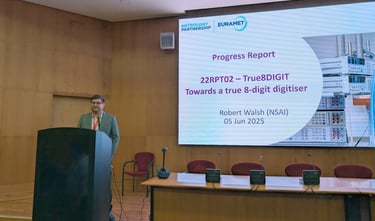

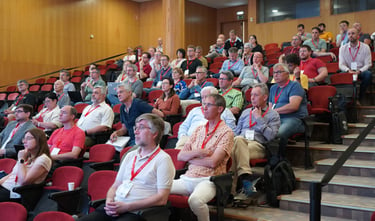



WP 6
MANAGEMENT AND COORDINATION
WP6 ensures the robust administrative, financial, and technical oversight of the entire 36-month project, led by the Coordinator (NSAI) and supported by all participants and WP leaders, which is responsible for guiding the project, managing risks (scientific, technical and management), and ensuring that ethics issues are addressed.
Funded by the European Union. Views and opinions expressed are however those of the author(s) only and do not necessarily reflect those of the European Union or EURAMET. Neither the European Union nor the granting authority can be held responsible for them.
The project (22RPT02 True8DIGIT) has received funding from the European Partnership on Metrology, co-financed from the European Union’s Horizon Europe Research and Innovation Programme and by the Participating States.The UK participant in Horizon Europe Project 22RPT02 True8DIGIT is supported by UKRI grant number 10,084,012 (Signal Conversion Ltd).
